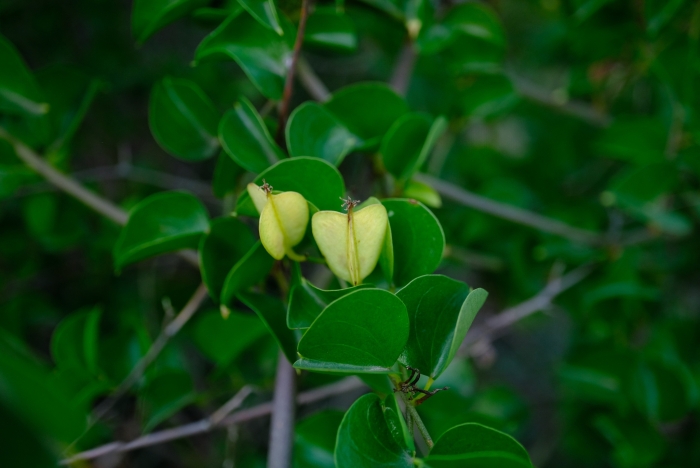Elephant’s Foot
(Dioscorea elephantipes)
Elephant’s Foot (Dioscorea elephantipes)
/
/

Nick Helme
CC BY-SA 4.0
Image By:
Nick Helme
Recorded By:
Copyright:
CC BY-SA 4.0
Copyright Notice:
Photo by: Nick Helme | License Type: CC BY-SA 4.0 | License URL: http://creativecommons.org/licenses/by-sa/4.0/ | Rights Holder: Nick Helme | Publisher: iNaturalist | Date Created: 2023-07-05T16:18:53-07:00 |

























Estimated Native Range
Summary
Dioscorea elephantipes, commonly known as the elephant’s foot or Hottentot bread, is a deciduous climber native to the semi-arid Karoo region and other dry interior areas of South Africa. This plant is well adapted to its native rocky habitats, often found on north and east-facing slopes with quartz or shale-based soils. The most distinctive feature of Dioscorea elephantipes is its large, partially buried, tuberous stem that resembles an elephant’s foot, which can grow slowly to over 10 feet in circumference and nearly 3 feet above ground. The stem’s corky appearance provides protection against wildfires and drought. Above ground, the plant develops slender, leafy, climbing shoots. It produces inconspicuous dark-spotted, greenish-yellow flowers during the winter months.
The elephant’s foot is valued for its unique and sculptural caudex, making it a conversation piece in gardens or as a container plant. It is also recognized for its low water needs and is suitable for xeriscaping. In cultivation, it requires extremely coarse, well-drained soil and sparse watering, particularly during its summer dormancy period. While it prefers dappled sun or semi-shaded positions, it can tolerate full sun in cooler climates. The plant has been awarded the Royal Horticultural Society’s Award of Garden Merit, indicating its exceptional qualities for garden use. However, it is slow-growing and can be susceptible to rot if overwatered or if drainage is inadequate.CC BY-SA 4.0
The elephant’s foot is valued for its unique and sculptural caudex, making it a conversation piece in gardens or as a container plant. It is also recognized for its low water needs and is suitable for xeriscaping. In cultivation, it requires extremely coarse, well-drained soil and sparse watering, particularly during its summer dormancy period. While it prefers dappled sun or semi-shaded positions, it can tolerate full sun in cooler climates. The plant has been awarded the Royal Horticultural Society’s Award of Garden Merit, indicating its exceptional qualities for garden use. However, it is slow-growing and can be susceptible to rot if overwatered or if drainage is inadequate.CC BY-SA 4.0
Plant Description
- Plant Type: Succulent, Vine
- Height: 1-2 feet
- Width: 1-2 feet
- Growth Rate: Slow
- Flower Color: Green, Yellow
- Flowering Season: Spring, Summer
- Leaf Retention: Deciduous
Growth Requirements
- Sun: Full Sun, Part Shade
- Water: Low
- Drainage: Medium
Common Uses
Drought Tolerant, Low Maintenance, Potted Plant, Rock Garden
Natural Habitat
Semi-arid Karoo region and other dry interior areas of South Africa
Other Names
Common Names: Elephant’s Foot, Turtle Back Plant, Elephant’s Foot Yam
Scientific Names: , Dioscorea elephantipes, Dioscorea elephantopus, Dioscorea montana, Dioscorea testudinaria, Rhizemys elephantipes, Rhizemys montana, Tamus elephantipes, Testudinaria elephantipes, Testudinaria elephantipes
GBIF Accepted Name: